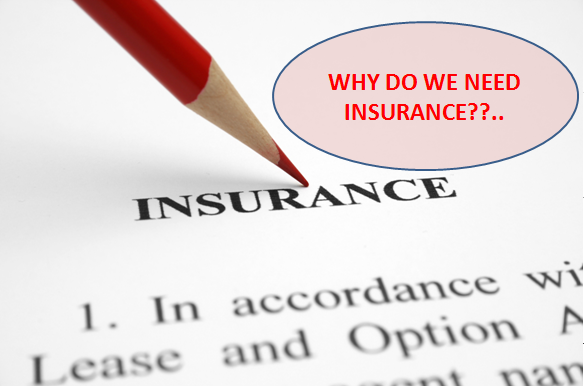Pacific Prime Things To Know Before You Get This
Pacific Prime Things To Know Before You Get This
Blog Article
The Ultimate Guide To Pacific Prime
Table of ContentsFascination About Pacific PrimeExamine This Report on Pacific Prime8 Easy Facts About Pacific Prime ShownThe Pacific Prime Statements
In most states, the insurance firm is needed to send you a copy of the modifications to your policy. It is crucial that you review Endorsements or Motorcyclists so you recognize how your plan has actually transformed and if the plan is still adequate to meet your demands. To obtain a copy of your insurance coverage plan, please call your insurance representative or company.
The Institute of Medicine (IOM) Board on the Repercussions of Uninsurance launches a prolonged assessment of evidence that addresses the importance of medical insurance protection with the magazine of this record. Insurance coverage Issues is the very first in a series of 6 reports that will certainly be released over the following two years recording the truth and repercussions of having an approximated 40 million individuals in the United States without medical insurance protection.

The 6-Second Trick For Pacific Prime
The objective of this collection of studies is to refocus plan focus on a longstanding issue. Adhering to the longest financial development in American history, in 1999, an estimated one out of every six Americans32 million adults under the age of 65 and greater than 10 million childrenremains uninsured (Mills, 2000).

Ten percent of the population make up 70 percent of health treatment expenditures, a relationship that has actually stayed consistent over the previous 3 decades (Berk and Monheit, 2001) - international travel insurance. Thus medical insurance remains to serve the feature of spreading threat also as it increasingly funds routine care. From the perspective of health and wellness treatment companies, insurance policy brought by their clients assists protect a profits stream, and areas gain from monetarily feasible and secure healthcare experts and establishments
Federal government gives wellness insurance policy to populaces whom the personal market may not serve efficiently, such as handicapped and seniors, and populaces whose access to healthcare is socially valued, such as children and expecting women. The supreme ends of health and wellness insurance coverage for the specific and areas, consisting of work environment neighborhoods of workers and employers, are improved health and wellness outcomes and lifestyle.
The Pacific Prime Statements
Workers rate wellness insurance policy first by far in significance amongst all the advantages supplied in the office (Salisbury, 2001). There have been large financial investments of personal and public funds to give wellness insurance policy, several individuals still have no protection. Regardless of comprehensive reporting of survey findings and wellness treatment research study results, the public remains baffled and mistaken concerning Americans without medical insurance and the implications of doing not have protection.

Without doubt, the intricacy of American healthcare financing systems and the wide range of sources of info include to the public's complication and hesitation regarding medical insurance data and their analysis. This report and those that will follow aim to boil down and offer in conveniently understandable terms the substantial study that bears upon questions of health insurance coverage and its value.
Fifty-seven percent of Americans surveyed in 1999 thought that those without health insurance coverage are "able to obtain the treatment they require from doctors and healthcare facilities" (Blendon et al., 1999, p. 207). In 1993, when nationwide focus was focused on the issues of the uninsured and on pending health and wellness care regulation, just 43 percent of those surveyed held this belief (Blendon et al., 1999).

They also obtain less precautionary services and are much less likely to have regular look after chronic problems such as high blood pressure and diabetic issues. Chronic diseases can bring about costly and disabling problems if they are not well taken care of (Lurie et al., 1984; Lurie et al., 1986; Ayanian et al., 2000). One nationwide survey asked greater than 3,400 adults about 15 very severe or dark conditions.
Some Ideas on Pacific Prime You Need To Know
Extra proof exists later on in this phase in the discussion of insurance policy and access to wellness care. https://padlet.com/pacificpr1me/my-harmonious-padlet-xyem37dpr2sq1yce. People without medical insurance are young and healthy and balanced and choose to do without protection. Almost fifty percent (43 percent) of those surveyed in 2000 thought that people without medical insurance are most likely to have health issue than people with insurance coverage
Voters and policy manufacturers in focus team discussions identify those without insurance coverage as young people who have the possibility to be covered and feel they do not need it (Doorperson Novelli, 2001). Compared to those with a minimum of some exclusive protection, the uninsured are much less most likely to report remaining in outstanding or great health and wellness (Firm for Healthcare Research Study and Quality, 2001).
SOURCE: Facility for Price and Financing Researches, Agency for Health Care Study and Quality, based upon MEPS data. Youthful adults in between 19 and 34 are far much more likely to do not have health and wellness insurance than any type of other age. This is mainly because they are less commonly eligible for employment-based insurance because of the nature of their job or their short tenure in it.
The understanding that people without insurance coverage have better-than-average wellness follows from confusing the reasonably young age profile of the without insurance with the much better health, on standard, of more youthful persons. This obscures the link in between wellness condition and wellness insurance coverage. For those without accessibility to workplace wellness insurance, inadequate about his wellness is a potential barrier to buying nongroup coverage due to the fact that such coverage may be extremely priced, exclude preexisting problems, or be simply unavailable.
Report this page